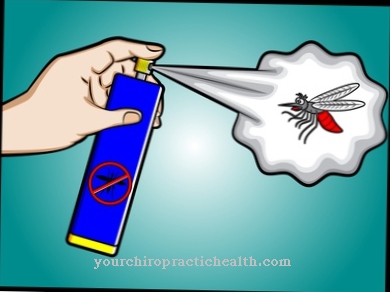Of the drill is one of the most important instruments of the dentist. He participates in numerous different treatments.
What is a drill?

Various rotating dental instruments are summarized under the term drill. The dentist clamps these differently equipped and designed attachments in turbines, handpieces or contra-angles.
When used, the dental drill emits a sound that is reminiscent of a conventional drill. In many patients, this sound is more likely to cause anxiety.
A particularly important part of the dental drill is the turbine, which is indispensable for drilling and milling. To work, the dentist connects them to a dental unit that has standardized connections. It is used for both conservative treatment and prosthetic therapy.
Shapes, types & types
There are different types of dental drills. It is driven by a turbine. However, there are larger differences in the ball bearings. Modern drills have a ceramic ball bearing in their turbine. As a result, drills of this type are less noisy than other types, which in turn has a positive effect on the patient. In addition, the device transmits only a few vibrations to the teeth, which significantly reduces the sensation of pain. Since these modern drills are more sensitive, they are also suitable for dentures.
There are some differences between the rotary instruments of the drill. This includes its shape, its material, its circumference, its shaft and the area of application. The materials used are steel, diamond, hard metal, ceramic grinding tools and elastic polishers, which are also known as rubber polishers. The different shapes of the instruments are offered in several sizes.
The round drill is one of the most important rotating dental instruments. It is also known as a round borer and is used to remove tooth decay. Other types of drill are the fissure drill, the wheel drill and the carbide or steel drill, which have similar purposes to the round drill. Some of these drills can also be used to machine plastics and metals.
The laser drill is a special kind of dental drill. This dental laser is gentler than the conventional drill and is suitable for the treatment of smaller caries defects. In doing so, it removes less tooth substance. However, there are some limits to the process, so that the conventional dental drill cannot yet be dispensed with.
Structure & functionality
A dental drill consists of several sections. This includes the head, neck and shaft. The working part is done by the head of the drill. On the other hand, the shaft ensures that it is fastened within the drive.
A dental drill must have important quality features. These are the hardness of the material, sharpness and the accuracy of the concentricity. In addition, the instruments should have dimensional accuracy. The distinctive features of the dental drill include the different color markings. They serve as information on the toothing properties or the diamond grain size.
Dental drills are considered to be high quality precision instruments. The turbine of the drill reaches a high speed of rotation. This enables the drill to also treat fine areas. This does not damage neighboring teeth.
In addition, the speed of the turbine generates a certain degree of heat. This can cause pain in the treated tooth in some patients. However, by cooling the drill with water, the dentist has the option of counteracting this process, which ensures a gentler treatment.
To treat the caries areas, the dental drill must be made of hard material. For this reason, it is composed of very hard metal such as steel or diamond. In most cases, as part of a treatment with a dental drill, the patient receives an anesthetic injection beforehand. In this way, the drilling treatment is usually painless.
You can find your medication here
➔ Toothache medicationMedical & health benefits
Although the dental drill is more likely to make many patients feel uncomfortable, its health benefits are very great. With its help, parts of the tooth that are affected by harmful caries can be easily removed. This usually prevents further dental problems.
In addition, prior to the invention of the drill in 1790, dental treatment was much more painful. At the time, patients were treated by so-called tooth breakers, who simply levered the painful tooth out of the affected person's teeth without any anesthetic. A glowing branding iron was then used to stop the bleeding.
In 1790, however, the American dentist John Greenwood, George Washington's personal dentist, succeeded in developing a drill from a spinning wheel that could be driven by a foot pedal. In 1875, the American George Green finally invented a dental drill with an electric drive. This is still the basis for the treatment of caries to this day.
With the help of the dental drill, the dentist not only removes tooth decay, but also dentures or older fillings. The areas that are affected by caries are cleaned with the drill and treated accordingly. He uses the drill as gently as possible. If the fear of the dental drill is too strong, very sensitive patients can be numbed with a sedative or general anesthetic.

























.jpg)


